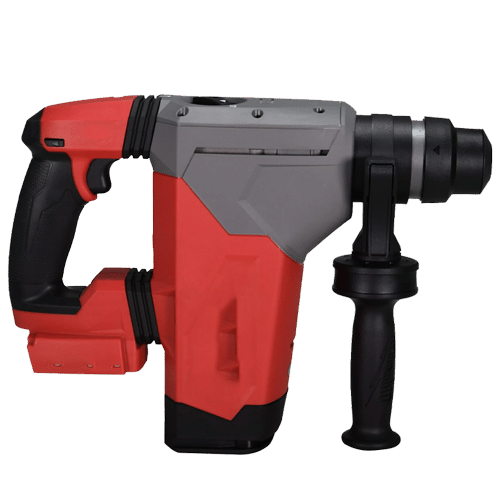This article will explore how a hammer drill works and what makes it different from other drills. We will also discuss a hammer drill’s various features and capabilities and how to use one effectively to achieve the best results in your projects.

A hammer drill is a versatile tool commonly used in construction, woodworking, and metalworking projects. It is designed to quickly drill holes into hard materials like concrete, stone, and metal. Unlike a standard drill, a hammer drill has a unique mechanism that allows it to generate a rapid hammering motion as it drills, which helps break up rigid materials and make drilling faster and more efficient.
When the drill is set to hammer mode, the hammering action causes the drill bit to strike the material you’re drilling into rapidly. This action creates a lot of force, which helps the drill quickly bore through rigid materials. The hammering action also causes the drill bit to spin, which helps create a clean hole.
Most hammer drills come with a depth stop, which allows you to control how deep the drill bit goes into the material. This is useful when drilling into a soft material like wood, as it prevents the drill bit from going too deep and damaging it.
Hammer drills typically have higher torque, meaning they can apply more force to the drill bit. This results in a more rapid drilling rate. Now, we will tell you how a hammer drill works.
How Does a Hammer Drill Work?
A hammer drill works by using the mechanism’s hammering action to create a pounding force on the drill bit. This pounding force helps to break through more rigid materials, such as masonry and concrete. The electric motor powers the piston, which drives the hammering action. This action creates the percussive blows that help to break through the material.
Regular Drill Vs. Hammer Drill
Regular and hammer drills are two common types of power drills used for drilling holes in various materials—the main difference lies in their mechanism of action.
A regular drill operates by spinning the drill bit rapidly in a circular motion, cutting into the material and creating a hole. It is ideal for drilling holes in soft materials like wood, plastic, and thin metal sheets.
On the other hand, a hammer drill has an additional mechanism that allows it to generate a rapid hammering motion as it drills. This hammering helps break up rigid materials like concrete, stone, and brick, making it much easier and faster to drill through. Depending on the drilled material, the hammering mechanism can be turned on or off.
How to Use a Hammer Drill?
To use a hammer drill, ensure the drill bit is correctly secured in the chuck. Next, align the drill bit with the desired drilling location. Then, activate the trigger to start the motor. Apply pressure to the drill bit as it starts to rotate. As the drill bit penetrates the material, the hammering action will begin.
Continue to apply pressure and allow the drill bit to do the work. If the drill bit becomes stuck, release the trigger and try again. Slowly release the trigger as you reach the desired depth of the hole.
Hammer drills are helpful for anyone who needs to drill holes in hard materials like concrete or stone. They’re a good option if you’re looking for one that can handle tough drilling jobs.
When shouldn’t I use a hammer drill?
A hammer drill should not be used on soft or brittle materials like plaster or glass. It is also not recommended for use on materials sensitive to impact, such as delicate electronics. When in doubt, consult a qualified professional before using a hammer drill.
How to Clean the Hammer Drill?
Keeping your hammer drill clean is essential to prevent rust and corrosion. After each use, wipe down the drill with a clean, dry cloth. If the drill is dirty, you can use mild detergent and water to clean it. Be sure to rinse the drill well after cleaning it. To prevent rust, apply a thin layer of oil to the drill after each use. Store the drill in a dry place when not in use.
Conclusion
A hammer drill is a versatile tool that can be used for many purposes. By understanding how a hammer drill works, you can use it more effectively to get the job done. We hope this article has helped give you a better understanding of how the hammer drill functions and shows you some of its potential applications.
If you have questions about using a hammer drill or want advice on which one is best for your needs, don’t hesitate to contact us. We are always happy to help our customers find the perfect tools for their projects.
FAQs
How do I know if my hammer drill is defective?
If your hammer drill is not functioning correctly, consult the manual for troubleshooting. Contact the manufacturer if the manual is unavailable. If the issue persists, consider having a qualified person take the drill for repair.
My hammer drill won’t start?
To troubleshoot a hammer drill that won’t start, check if the power is on and the batteries are correctly installed. If the problem persists, consult a qualified professional for motor inspection.